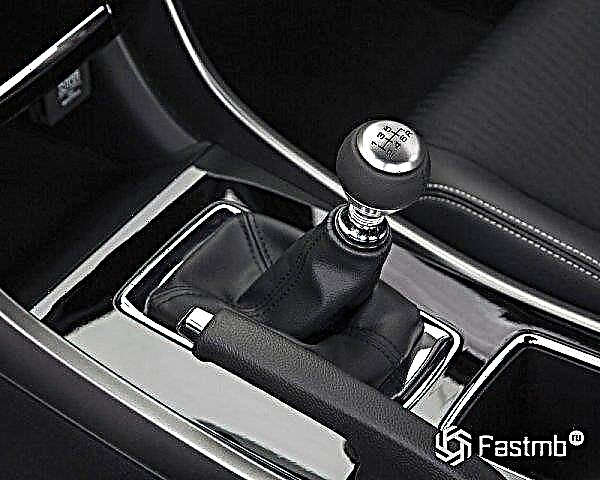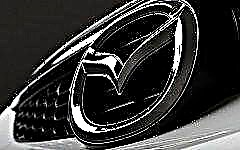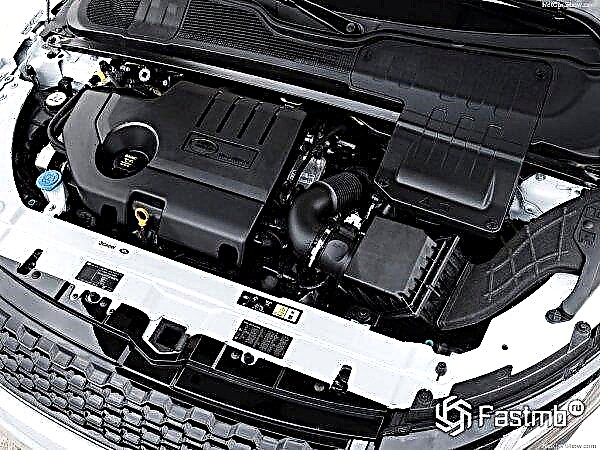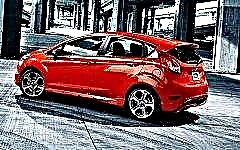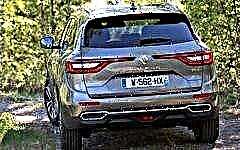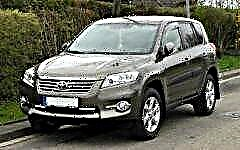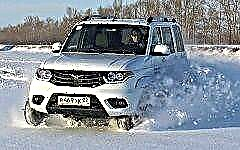

The content of the article:
- Tuning for the Far North
- It is not accepted to jam cars at night
- Driving along the highway
- Special requirements for the machine
- Popular car models in Yakutia
- Where we go
- The main route to Yakutia from Moscow
In Russia, motorists are accustomed to frost, but when the thermometer drops below minus 25 degrees, problems often occur with the car plant, interior heating, and "winter" problems emerge.
But in our country there are regions where such a low temperature in winter is almost "summer". The normal operating temperature of the car in Yakutia is from minus 40 degrees below zero ...
Tuning for the Far North

Most car manufacturing companies give a guarantee for the trouble-free operation of vehicles in a certain temperature range, the lower limit of which is minus 40 degrees. The average production car simply will not start in severe frost.
But in Yakutia, such a temperature is the norm, and even from time to time drops to minus 60. Meanwhile, life does not stop there in the winter months, transport (with the exception of trams) adjusts to the climate.
Some car owners who do not have a warm garage put their cars in the parking lot for six months. All liquids are drained, the machine is wrapped in a tarp. In summer, everything is a little simpler and clearer - the temperature rises to 35 degrees Celsius.
What you need to do in the car, going to Yakutia in the cold:
- Carefully seal up all ventilation openings in the engine compartment. Local residents tighten the engine from below with a non-combustible cloth, and from above they wrap it up with felt.
- The air intake is moved under the hood closer to the radiator.
- The windshield is duplicated - it turns out almost like a "double-glazed window". This prevents frost from tightening the glass and provides additional thermal insulation.
- The oil in the engine and transmission is changed to synthetics.
- Brake fluid - arctic only! Its freezing point is at minus 70 degrees.
All these works to prepare the car for the winter period are carried out on the territory of Yakutia in any auto repair shop before the start of the cold season.
Of course, there are “urban madmen” who do not adapt their cars to winter. The fact that at the same time in the cabin you can only be in felt boots and sheepskin coat - these are trifles. You can drive a car with a large gasoline engine along the route "home / garage - work / garage".
Only the windshield can easily become covered with cracks due to uneven heating, and the oil from the engine can expand, squeezing out onto the oil seals, or lift the dipstick.
Mineral engine oil leads to freezing at low temperatures and rupture of the seals of the axle shafts. The oil can spoil the brake pads, and the brake fluid "for the European part of Russia" will simply freeze.
It can take a long time to list the possible problems caused by the neglect of the "northern tuning". Domestic equipment is always subject to revision. Thermal insulation of the body is mounted, additional stoves are installed, the standard pump is supplemented with an electric one.
Insulation of foreign cars occurs according to a slightly different scheme. A non-working air conditioner temporarily turns into another stove, while it is convenient to pump up tires with a compressor. The main thing is to pump the car wisely so that the heater does not "fry" so that the deflector curtains begin to melt.
When frosts come, the Yakuts stick wet newspapers on the car body - they instantly turn into a layer of armor that protects against scratches.
It is not accepted to jam cars at night

The residents of Yakutia are not familiar with the problem of not starting the car in winter. It should not start, as they start it in October and turn off the engine in April.
All cars traditionally spend the night in heated garages, as this is the only way to temporarily shut down the car. In this case, the bottom of the car will still be overgrown with icicles, and in the cabin, due to condensation, drops will hang on the ceiling.
In the garage, you need to keep the car doors open, as moisture gets on the sealing gum - upon contact with frosty air, it instantly freezes, turning the car into a trap with frozen doors.
In Yakutia, there is the only parking lot with sockets for charging electric vehicles. Whether or not they will take root in the north is an open question.
Since the engines do not turn off unless absolutely necessary, the winter operation of cars is extremely expensive. Fuel consumption increases 1.5 times, but that's not all - in order to survive the night, a warm garage is a prerequisite for the operation of transport.
Those who do not have a garage have to change to buses or taxis with the onset of cold weather.
It is often possible to see how ice drips form in the parking lots near the mufflers of parked cars. Meanwhile, the cars are standing with the engines running, the armed mode of protection, on the alarm.
No pre-start warming up, heating devices, interval autostart and accumulators can withstand the Yakut frosts.
Even the "hottest" car in half an hour will be frozen, and a cold start will turn into a disaster for the engine. It has already been calculated that the fuel consumption in the process of an unmuffled engine in a parking lot is comparable to the fuel consumption for a fractional engine.
It is impossible to actively turn the steering wheel after a long-term stay. Its large angle of rotation is capable of tearing the anthers on the CV joints.
Having started the movement, it is not recommended to "drive", it is necessary to warm up not only the interior, but also the wheels, gearbox and shock absorbers. At the same time, it is also not worth driving slowly - fogs are frequent in Yakutia in winter, and people can simply drive into the car from behind.
Reagents in the vastness of Sakha Yakutia are unknown. In frosts, the ice becomes rough, there is no ice in principle, and the car on ice and packed snow keeps the road well. Winter tires are used only of the Scandinavian type: studless and soft.
The situation when the car stalled in the parking lot leads to an unambiguous call for technical assistance. The arrived specialists wrap the car with tarpaulin, pumping hot air from a heat gun under the bottom of the cars. After 30 minutes, the engine is usually ready to start.
And if the car stalled due to running out of gasoline or ice jammed in the muffler, then these problems are most often eliminated on the spot: gasoline is poured, candles are changed, wheels are pumped up. In an extreme and worst case, the car is towed to the garage.
Driving along the highway

The territory of the Sakha Republic is huge. It fits 13 Great Britain or 6 France. Therefore, settlements are located at a great distance from each other, and there are few cars on winter roads and highways.
Since any technique is able to fail, being in the middle of a snowy silence in a cooling machine is an almost deadly situation.
Locals advise never to go on the highway without a satellite phone, because it remains the only "emergency phone".
The second no less important element of the machine's equipment is an autonomous heater - a blowtorch. If there is no money for an independent interior heater, then the blowtorch is able to heat not only the interior, but also warm up the diesel fuel line, if necessary, “thaw out” the pads, etc.
Special requirements for the machine

Diesel-powered cars require increased attention, since the engine never gets very hot, and at idle it cools down altogether. Therefore, the fan is turned off altogether for the winter.
The most important thing is to add quality fuel. Diesel fuel "Arctic" loses its mobility and thickens at minus 60 degrees.Usually this is enough, and it makes no sense to insulate the fuel line.
You should not go to the Republic of Sakha by car equipped with a high-tech transmission (for example, a DSG from VW). The statistics of work in the North are still insufficient. But the variators proved to be reliable, their main defect is extreme sensitivity to timely oil change.
Hydraulic suspensions are considered reliable, which are repaired in Yakutia easily and quickly.
Going on a trip by car, carry out suspension preventive maintenance, replace consumables, do not fill the car up to the eyeballs and carefully read the signs of the permitted speed.
After leaving the heated garage, you should move the suspension vertically, not allowing the night condensation to turn into ice. Also, do not forget that metal parts at a temperature of minus 50 quickly become fragile, so the ride should be smooth, without unnecessary shock and overload.
The climate in Yakutia is sharply continental, the temperature can fluctuate within 20 degrees per day.
Popular car models in Yakutia

- Right-hand drive "Japanese women" turned out to be frost-resistant, they are suitable for operation in the harsh northern weekdays.
- UAZ Hunter - "hit" of Yakutia. The familiar design makes it easy to repair the car even in the village garage, the cross-country ability is high. UAZs such as "loaves" and "Sable" are actively used. The Sobol turned out to be much better adapted for the conditions of the North than the UAZ. But the cars still need to be replaced after three years - they just can't stand it anymore. All northern UAZ vehicles are equipped with a rack and pinion jack and a winch.
- The next Yakut hit is Toyota. Moreover, the class of the car is not important. Both the Corolla and the Toyota Land Cruiser 100 are in use. A large and expensive SUV is valued not for its status, but for its reliability and strong chassis.
- Ford Ranger. Having additionally equipped a separator that warms up fuel and an autonomous Webasto heater, the machine is suitable for operation even in the basic configuration.
- Renault Logan. The installation of a second windshield is required by default, and the stove does not require modifications. The chassis is strong, and the engine easily "eats" propane without losing performance. Used in taxi companies in Yakutia.
- Volkswagen Polo. Residents of Yakutia equip these cars with gas equipment, resulting in serious fuel savings. Used in taxi companies in Yakutia.
- Many Nissan models are reliable, but fuel consumption becomes prohibitive in the North.
Where we go

There are many interesting places for recreation in Yakutia, which can be reached by car. Fishing, sports, educational and water tourism, mountaineering - this is what you can do in Yakutia:
- The Buluus glacier does not melt even on the hottest days, and the water from the non-freezing springs of Buluus has healing powers.
- Natural Park "Lena Pillars" (Turuuk Khaya) and Tukulan sandstones. Dozens of tourist routes permeate these places. Having reached the reserve, you can immerse yourself in the world of pristine nature for several days.
- There are many cultural monuments in Yakutsk itself and its environs. A visit to the Orto Doydu Zoo, the Mammoth Museum and the Permafrost Museum is a must. Near Yakutsk, Mount Chochur Muran, sacred for the Yakuts, is popular, on which the holiday of summer - Ysyakh is celebrated.
- Kuruluur waterfalls. The combination of pine forest and ringing water is wonderful. The place is beautiful in summer, it can be accessed by a grader road even with a low car, and in winter - by a strong winter road.
- Pole of cold Oymyakon - winter reigns there for ten months, and only three - real winter. Minus 77 is the lowest temperature recorded in the village. At the same time, the village is surrounded by non-freezing streams that make nature fantastic.
- The city-monument Vilyuisk, where many houses have been preserved since the 19th century. Here you can visit the Khomus Museum, go to Shchuchye Lake, relax in peace and quiet at the Billeakh lake camp.
The main route to Yakutia from Moscow

From Moscow to Yakutia - 8384 km, average travel time - 127 hours. On the way, 91 Russian cities are passed.
A short list of cities on the highway: Moscow - Ryazan - Samara - Ufa - Chelyabinsk-Ishim - Omsk - Kemerovo - Krasnoyarsk - Nizhneudinsk - Usolye - Sibirskoye - Chita - Solovievsk - Tynda - Aldan - Yakutsk.
During the journey, the car moves along the highways: M5, M36, M51, P402, P254, P255, M53, M55, Amur, M58, M56.
Conclusion
The tourist routes of Yakutia are interesting, the main thing is to overcome yourself by going to the end of the Earth by car.
Usually, travelers only get to Lake Baikal, but the further east, the better the roads and the more beautiful the place. Traveling, taking into account the preparation of the car for the trip, consumables, gasoline, accommodation on the way - is extremely expensive, but the impressions from it will last for a whole year!

